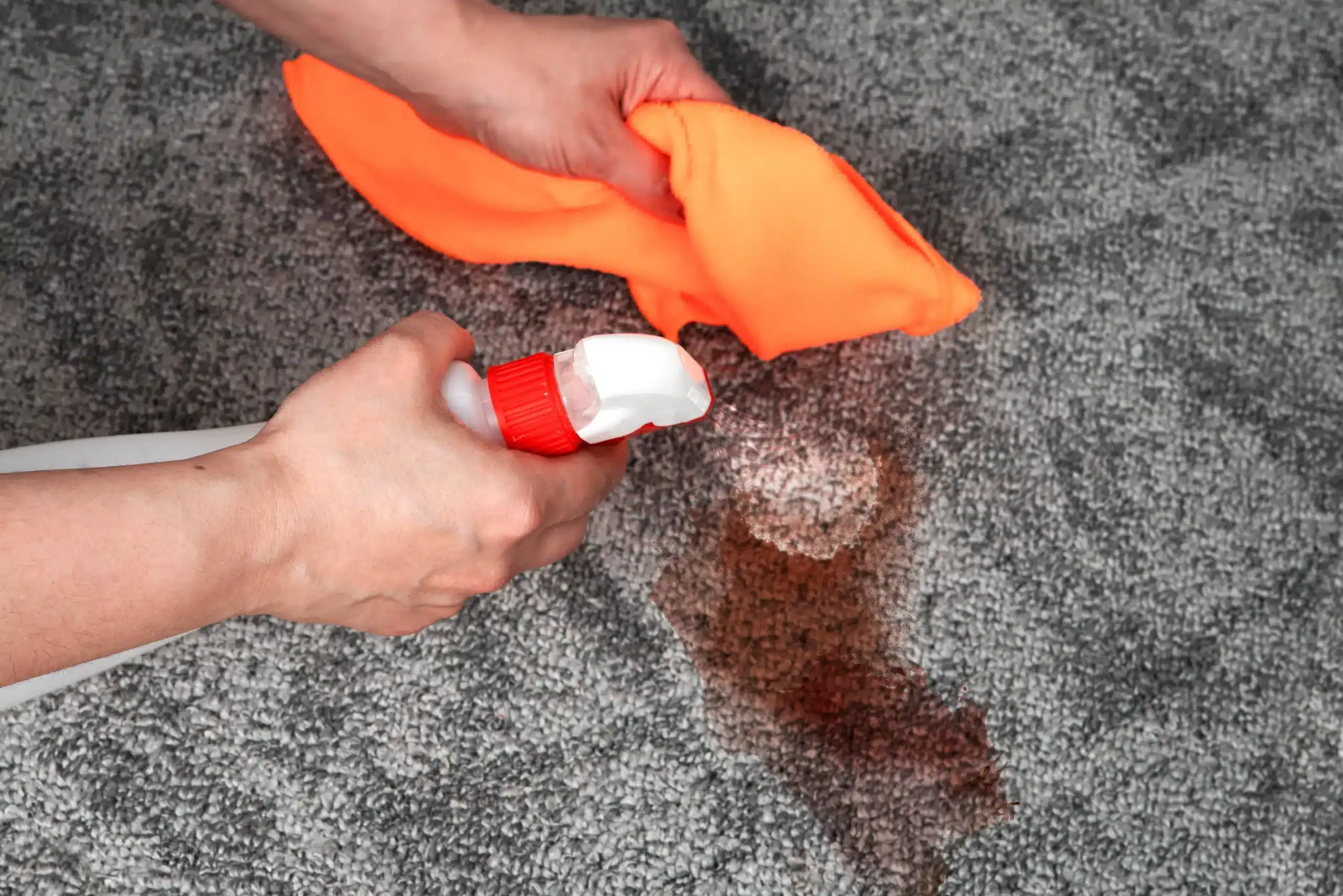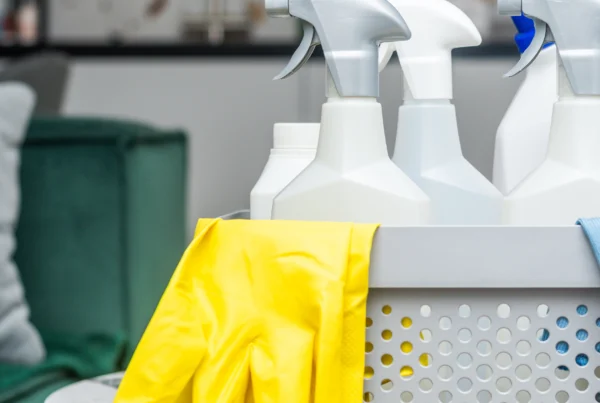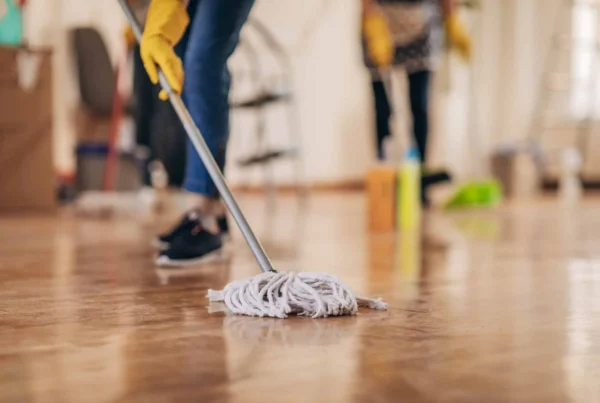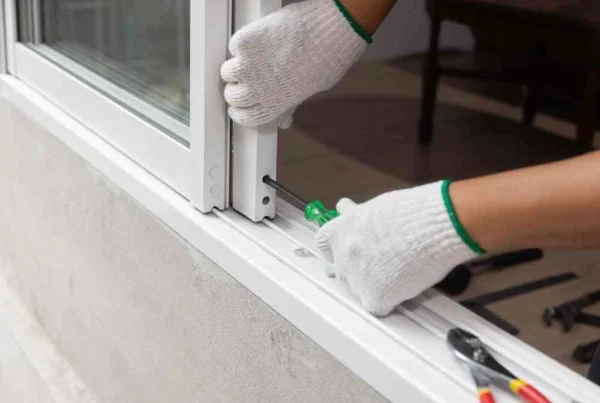Dealing with grease stains on your carpet can be a daunting task, turning a once pristine floor into an unsightly blemish. Whether it’s a result of a kitchen mishap or an unexpected spill, the challenge lies in not just removing the stain but doing so effectively and without causing damage to your carpet fibers. In this guide, we’ll delve into the art of reclaiming your carpet’s glory, exploring step-by-step methods and expert tips on “How to Clean Grease From Carpet” so you can bid farewell to those stubborn stains and revive the plush beauty of your flooring.
Understanding Grease Stains
Before diving into the cleaning process, it’s essential to understand the nature of grease stains. Different types of grease can affect carpets in various ways, and identifying the source of the stain is crucial for selecting the most effective cleaning method.
Types of Grease Stains
Cooking Grease
Cooking grease, often derived from oils and fats used in food preparation, can leave behind oily residues on carpets. These residues attract dirt and can result in a sticky, discolored patch on the carpet, making it susceptible to further soiling.
Automotive Grease
Automotive grease, containing heavy oils and lubricants, can be particularly challenging for carpets. When transferred from shoes or tools, it forms stubborn, dark stains that not only compromise the carpet’s appearance but can also seep deep into the fibers, requiring thorough cleaning to prevent long-term damage.
Mechanical Grease
Grease from machinery and mechanical equipment often carries a combination of oils and industrial lubricants. When introduced to carpets, it can lead to greasy spots that are resistant to regular cleaning methods, necessitating specialized treatments to break down the industrial-grade residues and restore the carpet’s texture.
Body and Hair Grease
Body and hair grease, whether from personal care products or natural skin oils, can accumulate on carpets, especially in high-traffic areas. Over time, these greases attract dust and debris, forming a sticky film on the carpet surface that dulls its color and texture, requiring thorough cleaning to maintain a fresh and clean appearance.
Materials You’ll Need
Before you begin, gather the necessary cleaning supplies. Having the right tools on hand will make the cleaning process more efficient. Here’s what you’ll need:
- Absorbent cloths or paper towels
- Dishwashing liquid or grease-cutting detergent
- White vinegar
- Baking soda
- Clean, dry towels
- Soft-bristle brush
- Carpet cleaner or stain remover (optional)
Preparation Steps
Before diving into the task of tackling oil stains on your beloved carpet fibers, it’s crucial to embark on a journey of preparation. Begin by assembling your cleaning arsenal, including a mild cleaning solution, a spray bottle, and a reliable vacuum cleaner. The initial step involves a cautious exploration, as testing the cleaning solution in an inconspicuous area ensures that the delicate carpet fibers won’t bear the brunt of any adverse reactions. Armed with your chosen solution and a trusty spray bottle, gently apply the mixture to the hidden spot, allowing you to gauge its impact on the carpet’s color and texture. This strategic approach guarantees that when it comes to addressing oil stains, your cleaning solution is not only effective but also tailored to preserve the integrity of your carpet fibers. Once the test proves successful, you’re armed and ready to confront those stubborn oil stains that have marred the beauty of your carpet. With the vacuum cleaner in tow, you’re set to embark on the journey of restoring your carpet to its former glory, armed with the knowledge that your preparation steps have paved the way for clean success.
Step-by-Step Cleaning Process
1. Blotting and Absorbing
The first step in rescuing your carpet from the clutches of oil stains involves immediate action. Equip yourself with a dry cloth to blot and absorb as much of the oil as possible, preventing it from seeping deeper into the carpet fibers and sparing yourself the agony of dealing with a larger, more stubborn stain later on.
2. Applying Dishwashing Liquid
Armed with a determination to keep your hands clean and your carpet spotless, mix a solution of warm water and a few drops of liquid soap. Dab the soapy solution onto the oil stain, gently working it into the affected area with a clean cloth or sponge. This method ensures that the dishwashing liquid can effectively break down the oil, preparing the stain for the next phase of the cleaning process.
3. Using White Vinegar
For the next step, introduce the power of white vinegar to the cleaning equation. Create a mixture of equal parts white vinegar and water, applying it to the oil-stained area. The vinegar not only aids in breaking down the remaining oil but also acts as a natural deodorizer, leaving your carpet refreshed and free from any lingering odors.
4. Baking Soda Absorption
Embrace the magic of baking soda for effective oil absorption. Sprinkle baking soda generously over the treated area, allowing it to sit for at least 15 minutes. This step is crucial for absorbing any residual oil and eliminating odors, leaving your entire carpet feeling revitalized and free from the clutches of stubborn stains.
5. Vacuuming
Once the baking soda has worked its magic, wield the power of a vacuum cleaner to remove the residue and unveil a refreshed carpet surface. The vacuuming step ensures that any remaining particles are suctioned away, leaving your carpet looking as good as new and your hands-free from the mess.
6. Checking for Residual Stains
Before declaring victory over the oil stains, take a moment to inspect your carpet for any residual marks. This hands-on evaluation ensures that no remnants of the stubborn stains persist, allowing you to take targeted action if needed and leaving your entire carpet free from the shadows of oil-related woes.
Removing an Older or Stubborn Stain
Using Baking Soda and Hot Water
For a deep and revitalizing cleanse, combine the power of baking soda with hot water. Sprinkle baking soda generously over the stubborn stain, allowing it to sit and absorb the grease. Follow this with a thorough cleaning using hot water to lift away the dissolved grease and baking soda residue, leaving your carpet refreshed and free from lingering stains.
Applying Carpet Cleaner Solutions or Products
When faced with persistent or varied types of grease stains, it’s time to turn to specialized carpet cleaner solutions or products. Apply these products according to their instructions, ensuring you choose one suitable for your specific stain. This targeted approach addresses the varying compositions of grease stains, leaving your carpet free from even the most stubborn blemishes. Wondering if “Can I Use Mr Clean in My Carpet Cleaner?” and “How to Clean Carpet at Home” Check out this blog post to learn more!
Scrubbing with Gentle Pressure and White Cloth/Sponge/Brush
Armed with a white cloth, sponge, or soft-bristle brush, scrubbing with gentle pressure is a key step in restoring your carpet’s pristine appearance. Apply a cleaning solution to the stain and work it into the carpet fibers, using the white material to avoid color transfer. This method ensures a deep cleanse without causing damage to the carpet fibers, leaving your carpet looking as good as new.
Removing Excess Grease and Residue from the Carpet Fibres
After treating the stubborn grease stain, it’s crucial to eliminate any excess grease and cleaning product residue from the carpet fibers. Blot the treated area with a clean, absorbent cloth, ensuring that no lingering residues are left behind. This final step guarantees that your carpet not only looks clean but also feels fresh and free from the remnants of the challenging grease stain.
Conclusion
In conclusion, dealing with grease stains on carpets requires a systematic approach and the right tools. By following the step-by-step cleaning process outlined in this guide, you can effectively tackle grease stains and restore the beauty of your carpet. Remember, quick action and proper cleaning techniques are essential for successful stain removal. Share your experiences and tips in the comments below, and let’s keep our carpets looking pristine!
Revitalize your carpets effortlessly with ProClean’s expert touch. Say goodbye to stubborn grease stains as our specialized carpet cleaning techniques bring back the vibrancy to your flooring. Experience the ease of a grease-free carpet – schedule your ProClean service today and let the transformation begin!
FAQs: How to Clean Grease From Carpet
Can I use any type of dishwashing liquid to clean grease stains from my carpet?
It’s recommended to use a mild dishwashing liquid without added dyes or fragrances to prevent potential damage to your carpet fibers.
Is it necessary to test the cleaning solution in an inconspicuous area before applying it to the grease stain?
Yes, testing in a small, hidden spot ensures that the cleaning solution won’t cause color fading or damage to your carpet before applying it to the visible stain.
How long should I let the baking soda sit on the grease stain?
Allow the baking soda to sit for at least 15 minutes to effectively absorb the remaining grease before vacuuming it away.
Can I skip the vinegar step if I’m worried about the smell lingering on my carpet?
While the vinegar smell dissipates over time, you can rinse the area thoroughly with water after using vinegar to minimize any lingering odor.
What if the grease stain persists after following the cleaning steps?
If the stain persists, consider using a commercial carpet cleaner or stain remover, following the product’s instructions for a more targeted approach.
[/fsn_text][/fsn_column][/fsn_row]




